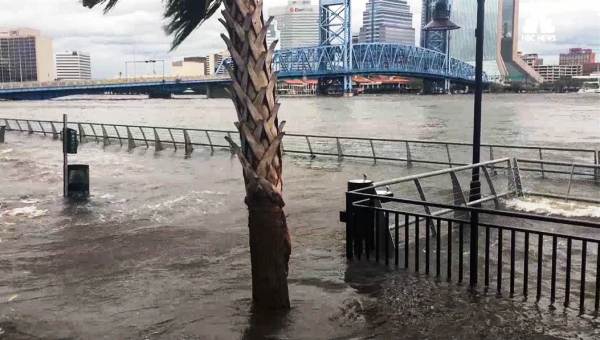Hurricane Irma had weakened to a tropical storm by the night of Sept. 10 as the eye of the storm passed 70 miles west of Jacksonville. But by noon the next day, the Atlantic Ocean was at high tide, the height of the St. Johns River had risen to a record level, and downtown Jacksonville was under six feet of water. Flooding persisted for days in some of the city’s neighborhoods.
An investigation by the Tampa Bay Times shows that Irma’s impact confirmed what city officials have long known: Jacksonville has a severe lack of drainage and is so vulnerable to flooding that even a hurricane less powerful than Irma could have catastrophic consequences. The Times cited a 2014 study showing that 90 percent of hurricane-related fatalities in the last 50 years were due to drowning.
The Times investigation also found that, despite the storm-related risk, Jacksonville leaders have allowed projects to reduce flooding to stall. As of 2015, more than half of active projects to make the city less prone to floods had insufficient funding.
Most Jacksonville flood-control projects completed in the last five years have been small-scale projects. Only a few had estimated costs over $750,000. Former Jacksonville officials say hundreds of millions of dollars are needed to fix the city’s drainage problems.
The Times also reported that the city’s vulnerability to floods is worst in poor, mostly black neighborhoods close to waterways that sprout from the St. Johns River.
The wide and shallow St. Johns River collects water across one-sixth of the state and dumps it into the Atlantic Ocean. But the ocean’s tide is stronger than the river’s current, so every high tide, ocean water pushes into the mouth of the river and miles upstream, where it remains trapped in the river until low tide.
Rain from a hurricane can raise the height of the river by several feet, because during high tide, the trapped water can’t flow into the ocean, according to Don Resio, director of the Taylor Engineering Research Institute at the University of North Florida in Jacksonville.
Hurricane Dora hit Jacksonville in 1964 and brought six inches of rain during high tide, causing flooding that reached the old record of four feet. Since then, real estate development has paved over much of Jacksonville, making the city more vulnerable to the record flooding that Hurricane Irma produced. [Tampa Bay Times] – Mike Seemuth
